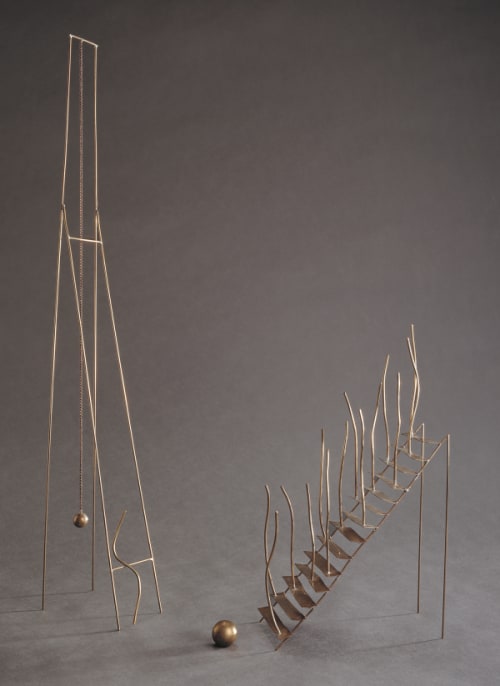Sculpture
Copper; 3 elements: 500 x 70 x 127 cm, 250 x 75 x 150 cm, 25 (diameter) cm
Fausto Melotti was active in the artistic milieu of pre-war Milan, where he developed influential friendships with the Rationalist architects of Gruppo 7 and the artists who gravitated around Galleria del Milione. With Lucio Fontana, he joined the ‘Abstraction-Creation’ movement. Melotti’s late work is characterized by rhythmic geometric forms with an underlying humanist narrative. He moved freely among mediums, incorporating plaster, ceramics, metal, and fabric into his work. His delicate sculptures often exploited flexible metals – brass, copper, and bronze. During the 1970s, he began to work on a more monumental and public scale, producing large works in steel and iron. In La Sibilla (The Sibyl) (1981) Melotti attempts to capture the immaterial essence of the Oracle and its prophetess. In Greek legend and literature, the sibyl is thought to utter the prophecies of a god. Here she is seated on a thronelike structure facing a staircase occupied by an audience of faithful listeners. In the center the artist depicts a sphere representing the truth. In ancient Greece, the sphere is considered a symbol of perfection and denotes the pure, metaphysical nature of self-conscious being.
